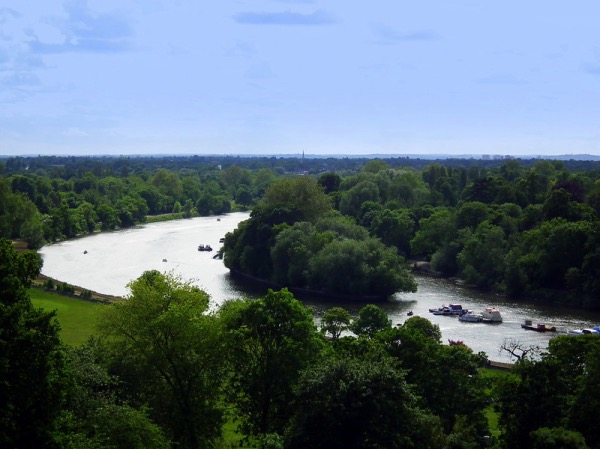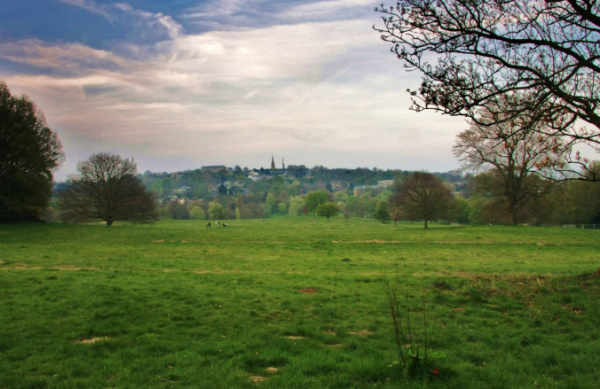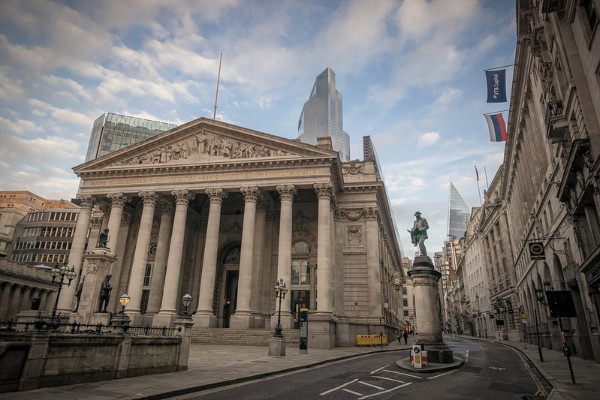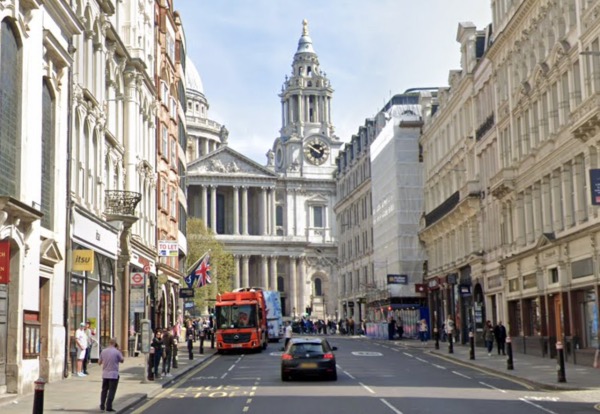10 London hills
10 London hills – 10. Richmond Hill…

For the final in this series we head out west to Richmond Hill which takes its name from the palace which once stood nearby.
At the summit of the hill, which stands about 50 metres (165 feet) high, stands the gate to Richmond Park while the steeper western slopes drop down to Petersham Meadows by the River Thames.
What was the village of Richmond – now incorporated into greater London – sits partly on the slopes of the hill. It and the hill take their names from a palace, established here in the early 16th century by King Henry VII as a replacement for Sheen (Shene) Palace which had been destroyed in a fire in 1499. The King named the new building Richmond Palace, in honour of the earldom of Richmond in Yorkshire, one of his titles.
Richmond Hill is famed for its views – they include the only view in England protected by an Act of Parliament (passed in 1902). It looks to the south-west over Petersham to the Thames, taking in Glover’s Island, and reaching as far as Windsor and has been immortalised in works by the likes of artists JMW Turner and Sir Joshua Reynolds as well as by author Sir Walter Scott.
Richmond Hill features many fine 18th century homes including Wick House (built for Joshua Reynolds in 1771) and the westward slopes boast the Terrace Walk and Terrace Gardens, both of which are Grade II* listed, while the massive bulk of the former Royal Star and Garter Home for disabled ex-servicemen (now apartments) can be seen close to the summit.
Other famous residents on the hill have included Rolling Stones’ guitarist Ronnie Wood and actress Celia Johnson while scenes for the film, The Hours, were shot on The Terrace.

10 London hills – 9. Highgate Hill…

This hill in the city’s north rises 136 metres (446 feet) above sea level and is said to take its name from a tollgate the Bishop of London once erected on the summit.
The hill, which stands to the northeast of the expansive Hampstead Heath and south of Highgate Wood, is topped by Highgate Village, long a fashionable residential district which features some significant 18th century buildings. It boasts views of central London.
Landmarks include the famous Highgate Cemetery – resting place to everyone from Karl Max to George Eliot and Douglas Adams – and the Highgate School, established on 1565 to educate the poor and now a rather exclusive – and expensive – establishment (the school, incidentally, was built on the site of an earlier hermitage). TS Eliot was a former master there and students included Poet Laureate Sir John Betjeman.
Other buildings of note include The Flask pub, St Michael’s Church (dating from 1831) and St Joseph’s Roman Catholic Church (dating from 1888).
Famous residents have included Romantic poet Samuel Taylor Coleridge (he was originally buried in a crypt below the school’s chapel but his remains were relocated to St Michael’s Church in 1961) while 16th and early 17th century philosopher and statesman Sir Francis Bacon died in what was then called Arundel House (now The Old Hall) in 1626. Classical scholar and poet AE Housman’s former house at 17 North Road is marked with an English Heritage Blue Plaque.
Highgate Hill is also famous for being where, so the story goes, Dick Whittington, who was accompanied by his cat, heard the Bow bells and felt called back to London (there’s a monument to Whittington and his cat close to the bottom of Highgate Hill Road).
10 London hills – 8. Harrow Hill…

This hill in outer north-west London, which rises 124 metres (408 feet) above sea level, is the location of the village Harrow-on-the-Hill.
The hill’s name is said to refer to a Saxon place of worship and was later taken to mean the Christian church that stood upon it.
That church – the historic St Mary’s, the latest incarnation of a Christian church which has stood on the hill since the Norman Conquest – dominates the hill to this day. Nearby is a spot called King Charles’ Well where King Charles I is said to have stopped and taken one last look at London as he made his way from Oxford to surrender to the Scottish army in Nottinghamshire.
The other famous landmark atop the hill, opposite the church, is the world renowned Harrow School, founded under a Royal Charter by John Lyon in 1572, during the reign of Queen Elizabeth I.
The hill is also host to a Grade II-listed war memorial and a fine array of historic homes dating from the Georgian period to the early 20th century. Among this who have lived on the hill are 19th. century critic and writer Matthew Arnold and 19th century Scottish author RM Ballantyne.
Panoramic views of Central London can be seen from the top of the hill and there is a famous viewpoint in the churchyard known as Lord Byron’s View, which looks away to the north-west. It’s so-called because Byron, while a schoolboy at Harrow, was a frequent visitor to the spot by a tombstone – called the “Peachy Tomb”- where he would apparently spend time “dreaming”.

10 London hills – 5. Primrose Hill…

Standing in a park located just to the north of Regent’s Park in the city’s inner north-west, Primrose Hill stands 63 metres above sea level and, like Parliament Hill, provides panoramic views of the city skyline.
The hill, which features one of six protected views in London, was once part of a chase (unenclosed hunting land) owned by King Henry VIII and was Crown property until 1842 when it became part of a public park through an Act of Parliament.
The name has been in use for at least 500 years and is thought to refer to the flowers that grew here profusely (which it means it can’t have been named for Archibald Primrose, Prime Minister between 1894 and 1895).
The hill forms part of one of Mother Shipton’s “prophecies” – she apparently proclaimed that when London surrounded the hill, its streets would run with blood.
It was for a time known as Greenberry Hill after three labourers – Robert Green, Henry Berry and Lawrence Hill – were found guilty of the murder of magistrate Sir Edmund Berry Godfrey (he had heard Titus Oates’ evidence in the so-called Popish Plot). Sir Edmund was found impaled on his own sword on the hill in October, 1678 – convicted of his murder the three men were hanged on its summit in 1679 (they were later exonerated and the death of Sir Edmund remains something of a mystery).
The hill, which has also apparently been known as Battle Hill, was also the location where the poet and antiquarian Iolo Morganwg (Edward Williams) founded the Gorsedd, a community of Welsh bards, on 21st June in 1792.
In 1838, a railway tunnel under the hill was completed by the North Western Railway – it was the first in London and connected Chalk Farm and Swiss Cottage. In the 1840s, a proposal to create a cemetery here was put to Parliament but never went ahead. There were also plans to develop the entire hill as a housing estate but nothing came of it.
On top of the hill is York stone edging with an inscription by William Blake: “I have conversed with the spiritual sun. I saw him on Primrose Hill.” There’s also the remains of an anti-aircraft battery from World War II.
On the hill’s slope, meanwhile, is a tree planted in 1964 to mark the 400th anniversary of Shakespeare’s birth (it replaced once planted 100 years earlier in honour of the Bard’s 300th).
Primrose Hill gives its name to part of the surrounding area, which remains a sought-after residential district.
For details on when to visit, head to www.royalparks.org.uk/parks/the-regents-park/things-to-see-and-do/primrose-hill.
10 London hills – 3. Tower Hill…

The last of the three hills at least partly within the walls of the old City of London is Tower Hill, located at the City’s eastern end.
Famed as a site of public execution, Tower Hill – which rises to almost 14 metres above sea level – was traditionally where traitors who had been imprisoned in the nearby Tower of London met their final moments.
More than 120 people have been executed on the site, everyone from Sir Simon de Burley, tutor to King Richard II, in 1388, through to Thomas Cromwell in in 1540 and a soldier arrested during the Gordon Riots of 1780.
These days the gallows and scaffold – and the crowds which accompanied them – are long gone, marked by a stone set in the pavement at the western end of Trinity Square.
The hill, which is just to the north of the Tower of London and takes its name from it, was historically part of the tower liberties – meaning authorities could ensure nothing was developed on it which would affect the defences of the fortress.
It is the site of one of the remaining sections of the Roman and medieval wall which once surrounded the City of London (the hill is located on both sides of the wall).
A Tube station, Tower Hill, which opened in 1884 (it was originally named Mark Lane and the name changed to Tower Hill in 1946; it relocated to the current site in 1967).
The hill is also home to the Tower Hill Memorial – a pair of memorials dedicated to the mercantile marines who died in World War I and World War II – set inside the public park known as Trinity Square Gardens.
10 London hills – 2. Cornhill…

(licensed under CC BY-NC 2.0)
The highest of the city’s three ancient hills (at 17.7 metres or 58 feet above sea level), it was on Cornhill that the first Romans settled following the invasion of 43AD and the later the site of the basilica.
In medieval times, a grain market was established on Cornhill which gave it the name it now bears.
Cornhill was also the location of a pillory (Daniel Defoe famously spent a day here in 1703 after writing a seditious pamphlet), stocks, and a prison known as the Tun where street walkers and lewd women were incarcerated.
Remembered in the name of the street which today runs from Bank junction to the western end of Leadenhall Street as well as being the name of one of London’s 25 wards, the hill is the site of several churches.
These include the aptly named St Michael Cornhill and St Peter-upon-Cornhill (said to be the oldest place of Christian worship in London) as well as the curiously named St Benet Fink (despite being rebuilt by Sir Christopher Wren after the Great Fire of 1666 this was eventually demolished in 1844 when the Royal Exchange was rebuilt).
The hill was also the location of The Standard, at the junction of Cornhill and Leadenhall Streets. Constructed in 1582, this was the first mechanically pumped public water supply in London. It was sometimes used as a point from where to measure distances out of London.
The area became famed for its coffee houses in the 16th to 19th centuries (Pasqua Rosée opened what is claimed to be London’s first in St Michael’s Alley in 1652) and as such was a financial centre. Much of Cornhill is now occupied by offices.
10 London hills – 1. Ludgate Hill…
Rome has its seven hills, Athens has the Acropolis and Paris – well, who can go past Montmatre? Yet, while hills may not be the first thing which come to mind when thinking of London, the city is home to numerous (low) peaks which have shaped the urban environment since ancient times (and some of which provide magnificent viewing points).

First up, we’re looking at Ludgate Hill, located in the western end of the City of London. One of the three ancient hills within the City walls, Ludgate Hill, which is now the site of St Paul’s Cathedral, is believed in Roman times to have been the site of a temple dedicated to Diana.
The hill, which today rises just 17.6 metres above sea level (the highest point lying apparently just to the north of the cathedral), is named after the former city gateway of Ludgate which is, in turn, named after the mythical King Lud.
These days the hill’s name is also commemorated in a street – Ludgate Hill – which runs from Ludgate Circus at its western end to St Paul’s Churchyard at its eastern end. It was also formerly the name of a railway station which opened in the late 1860s but was closed in 1923.